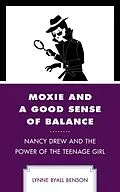Although there have been numerous books written about the fictional character, Nancy Drew, this book includes as analysis of Nancy Drew as a proto-feminist role model for young women in the twenty-first century. I have chosen to focus on the initial iteration of the Nancy Drew character, which was first introduced in 1929: Nancy Drew as an intelligent, independent young woman who reflected the world of her cohort as well as the adult world of criminality. In addition, this book examines the societal context in which this book was first introduced, and lends a perspective as to why the Nancy Drew series became so popular. As a lecturer in Women's, Gender, and Sexuality Studies at the University of Massachusetts Boston, and a scholar in women's history in the United States, as well as a life-long fan of Nancy Drew, I am uniquely qualified to write this book.
As mentioned previously, much has been written about Nancy Drew, the author of the series, Carolyn Keene, and publisher of the series, Edward Stratemeyer and his Stratemeyer Syndicate; however, the conversation regarding Nancy Drew as a feminist role model is one that needs to be continued, especially within the context of the #Me Too Movement. Since the most recent volume about Nancy Drew was published in 2008, this volume will serve as a more recent contribution to the conversation, one that can take place within the classroom in the form of a textbook and source guide.
Autorentext
By Lynne Byall Benson
Klappentext
The literary character of Nancy Drew, created by the Stratemeyer publishing syndicate in the 1930s, has endured for more than eighty years. Successfully solving complicated mysteries, Nancy Drew offered girls the role model of a confident, independent young woman, functioning simultaneously within what was considered appropriate within the sphere of her gender and outside of that sphere in terms of her so-called moxie. Nancy Drew's portrayal in the books has changed over the years, reflecting changing social norms, becoming a more obedient and less independent in the 1940s as women returned to traditional roles after World War II. Surprisingly, the Nancy Drew of the 1970s and 1980s did not reflect the changes brought about by the women's movement and instead was transformed into a glamorous, globe-trotting professional private investigator in The Nancy Drew Files. The publishers soon came to their senses and brought back the plucky Nancy of old. In addition to analyzing Nancy Drew as a proto-feminist role model, Lynne Byall Benson provides a comprehensive bibliography of sources that can be used by scholars and teachers.
Inhalt
Acknowledgments
1 Nancy's Timeless Appeal
2 The Stratemeyer Syndicate and the Modern Woman
3 Authoring an Icon
4 Editing Nancy
5 Drew-ness in the Twenty-First Century
Bibliography
Index
About the Author
